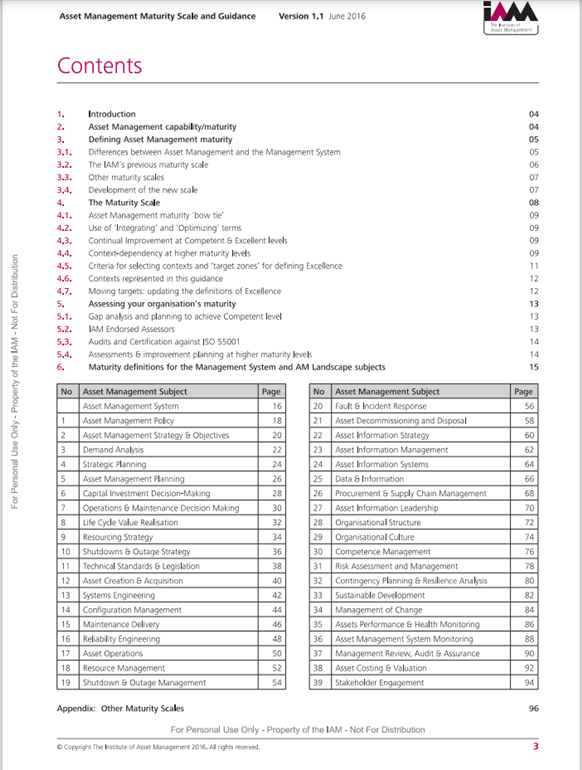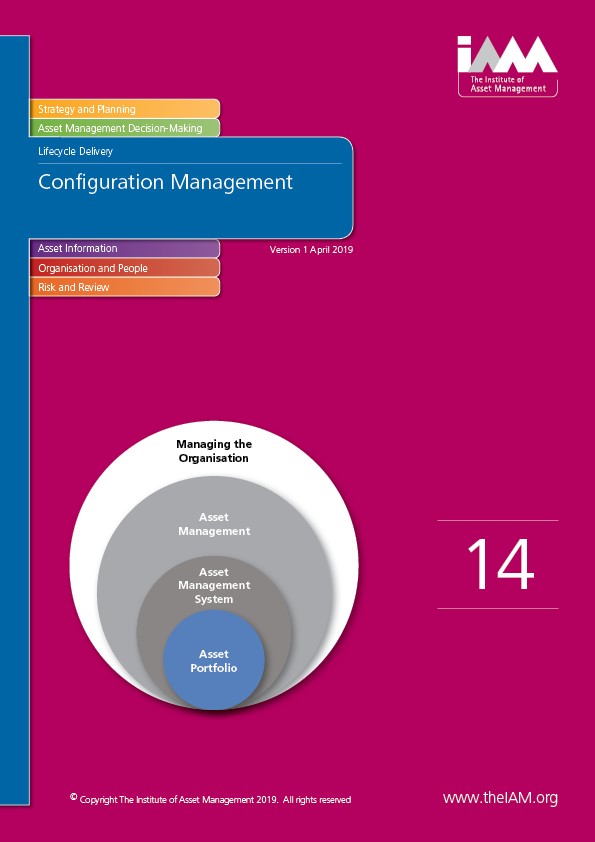SSG 14: Configuration Management
Version 1.0 April 2019
What can an organisation do to get the best out of its assets? Some assets can be configured in multiple ways, and these configurations can vary over time. This creates operational, maintenance, planning and supply chain challenges but to name a few. Configuration management identifies, records and manages the functional and physical attributes of assets, software and related documentation including the links between the components of a system. It is integral to asset creation and acquisition and is closely aligned with the principles of systems engineering.
This SSG covers the 5 key elements of configuration management:
- Configuration management and planning
- Configuration identification
- Configuration control
- Configuration status accounting
- Configuration verification & audits
Preview This SSG By Clicking Here
With thanks to our sponsors of this publication.


| CONTENTS | |
|---|---|
| Acknowledgements | ii |
| 1 INTRODUCTION 1.1 Purpose of the SSGs 1.2 Navigating & Using this document 1.3 Terminology 1.4 The Case for Configuration Management |
2 2 2 3 3 |
|
2 WHAT DOES CONFIGURATION MANAGEMENT MEAN? |
5 |
| 3 CONFIGURATION MANAGEMENT AND PLANNING 3.1 Introduction 3.2 Configuration Management Planning Process 3.3 Establishing Documented Controls 3.4 Establishing Mechanisms 3.5 Establishing Production of Configuration Management Plans 3.6 Application 3.7 Chapter Summary |
15 16 16 16 17 17 19 19 |
| 4 CONFIGURATION IDENTIFICATION 4.1 Introduction 4.1.1 Overview 4.1.2 Purpose 4.1.3 Context 4.2 Configuration Identification Process 4.3 Control 4.4 Inputs 4.4.1 Configurations Information and Attributes 4.5 Outputs 4.5.1 Setting Configuration Baselines 4.5.2 Presentation 4.6 Application 4.7 Chapter Summary |
20 20 21 22 23 23 24 26 26 26 26 28 29 30 |
|
5 RELIABILITY ENGINEERING TOOLBOX |
31 31 31 32 32 33 35 35 35 35 37 37 39 40 41 41 41 41 42 43 |
| 6 CONFIGURATION STATUS ACCOUNTING 6.1 Introduction 6.1.1 Overview 6.1.2 Purpose 6.1.3 Context 6.1.4 The CSA Process 6.2 Control 6.3 Inputs 6.3.1 Supporting elements 6.4 Outputs 6.5 Application 6.6 Chapter Summary |
44 44 44 44 45 46 47 47 47 47 48 49 |
|
7 CONFIGURATION AUDITING |
50 |
|
8 SUMMARY |
57 57 |
|
9 APPENDIX |
59 59 |
|
10 REFERENCES AND FURTHER READING |
68 |



